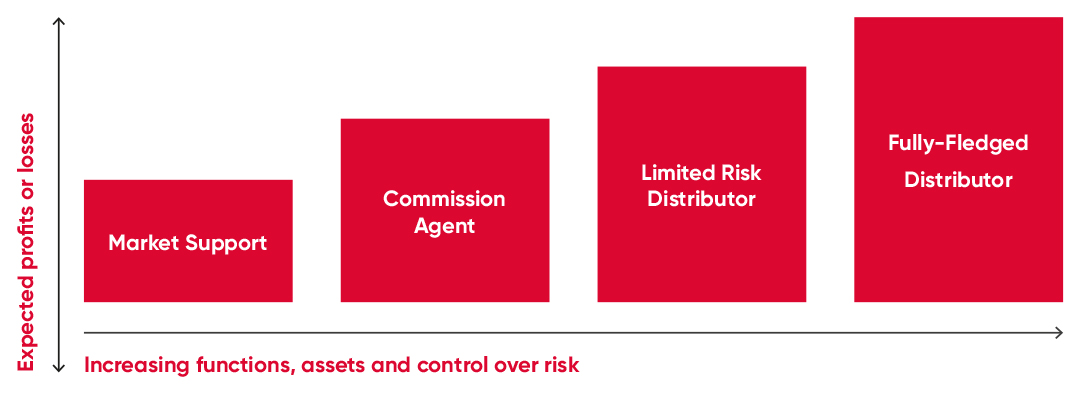The good news
In practice, Transfer Pricing is a lot more of a concern for international than for UK-only groups.
And the reporting requirements are very limited unless you are a “large” group or deal with higher risk jurisdictions.
Larger groups
For large companies there are formal valuation and documentation requirements, which are also regarded as ‘best practice’ for smaller entities. Medium-sized groups can also be directed by HMRC to apply the formal transfer pricing requirements.
Small groups are those with under 50 employees and either turnover or balance sheet assets under €10m. Medium sized companies have under 250 employees and under €50m turnover or assets under €43m. Be careful; these are worldwide limits, regardless of the size of the UK operations.
The largest groups (over €750m) already have to submit a report on their worldwide activities and income under Country-by-country reporting.
As from April 2023, the UK rules change, and these groups will additionally have to prepare a transfer pricing master file and local country file as well as a summary audit trail.
Transfer Pricing methods
You must use the most appropriate method having regard to your group’s specific facts and circumstances. The choice of method depends on the functions and assets of each entity, and increasingly hinges upon which entity has the key people controlling the main business risks.
There are five main methods:
- Comparable uncontrolled price – price for similar transactions with unconnected parties
- Resale price – deduct the expected gross margin from the final resale price
- Cost plus – add a mark-up to the cost base
- Transactional net margin or ‘TNMM’– set expected net profit based
- on comparable data such as return on sales
- Profit split – overall profit is allocated between entities based on their contributions.
How to avoid transfer pricing problems
- Make sure the transfer pricing method used is the best one considering your actual group arrangements. For example, if the group’s chief technology officer is in the UK, and all the R&D risk is controlled here, a small mark up on R&D costs may not be the most appropriate method.
Don’t assume the transfer pricing method applied in other markets will always apply in a new one, even if you have agreed it with another tax authority.
- Have written agreements in place in advance, making sure they reflect the true operations of the parties.
- Set realistic operational guard rails. For example, if the UK entity only has a cost-plus marketing support role, do not have senior sales people here earning high commissions or signing major contracts. If it is impractical not to allow them to do so, consider another method.
- Risks and expected rewards should be aligned – a ‘low risk’ entity with few key people functions is unlikely to expect excessive returns, nor usually to share in group losses.
- Review your transfer pricing method regularly as the business evolves, as well as any changes in locations and roles of the key people.
- If the UK authorities do impose an adjustment to the UK tax return be aware that a corresponding adjustment should normally be available in the tax return of the other party, although this will often need agreement from the local tax authority.
Setting up in the UK as a marketing support entity or distributor
As mentioned, the most appropriate transfer pricing will depend on the functions, assets and risks. People often ask if they can just apply a markup on costs to a sales and marketing office. This can be appropriate if the office is not concluding contracts and is merely a cost centre generating leads with minimal additional added value and not generating IP. Other low-risk entities might be commission agents (or in civil law countries ‘commissionaires’). NB these types of entities should not normally make losses, even if the group is loss-making overall.
‘Limited risk distributor’ or ‘LRD’ is another commonly heard phrase, referring to an industry practice to reduce profits in a distributing company that has limited control over business risks (eg it takes only flash title to inventory or stock provided by another company), with limited assets (the IP and other assets will generally also be owned elsewhere). Be careful; HMRC are not overly fond of people trying to assume this position without a full consideration and analysis of the facts.
By contrast a ‘fully-fledged distributor’ or ‘marketer-distributor’ may have senior staff locally and invest heavily in marketing. This will be a more entrepreneurial business and will expect to make higher profits in good years (but may be exposed to losses in bad years or during initial periods of market penetration).
Marketing and Distribution Models for Transfer Pricing









